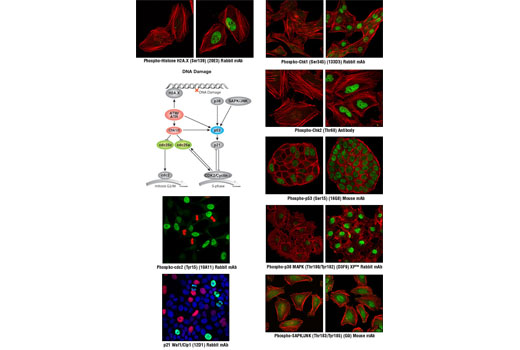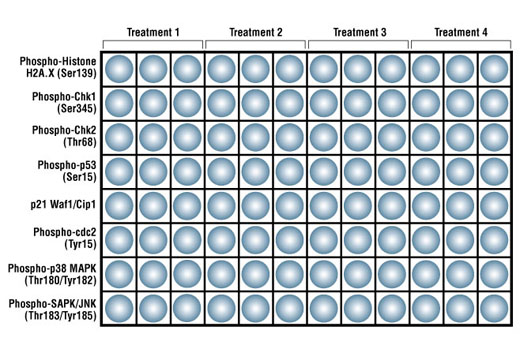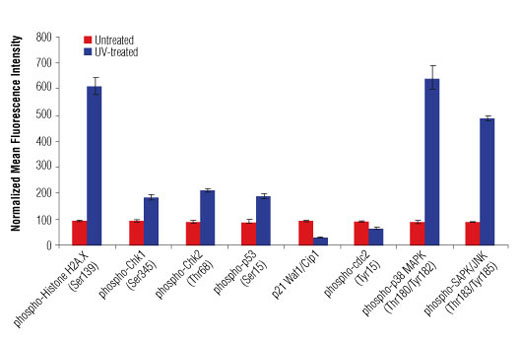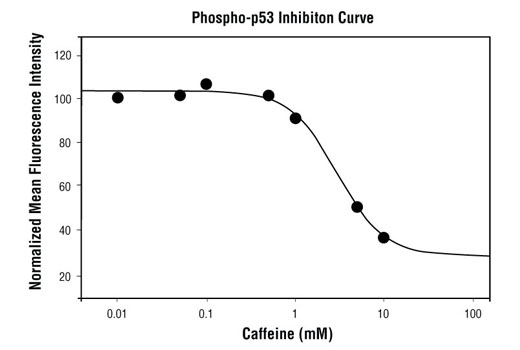
Signaling pathway for antibodies in the PathScan ® Multi-Target HCA DNA Damage Kit. Representative confocal immunofluorescent images display typical localization of the individual proteins in untreated (left) or treated (right) cells.

Schematic representation of a potential 96-well plate layout for the PathScan ® Multi-Target HCA DNA Damage Kit. On this generic map, four treatments are performed in triplicate down the columns of the plate, while each of the eight antibodies is applied across individual rows of the 96-well plate. This layout is designed to allow the investigator to monitor the signaling of the DNA damage pathway on one 96-well plate. The diagram above is one example; users may wish to reorganize plate map according to their needs.

HepG2 cells were left untreated (blue) or subjected to a 100 mJ UV treatment followed by a 1 hr recovery period (red). Mean fluorescence intensity was measured for antibodies in the PathScan ® Multi-Target HCA DNA Damage Kit. Data were generated on the Acumen ® HCS platform.

A549 cells were exposed to varying concentrations of caffeine for 30 min prior to and 1.5 hr following a 100 mJ UV-treatment. With increasing concentrations of caffeine, there was a significant decrease (~2.5-fold) in phospho-p53 as compared to the UV-treated control. When using phospho-p53 as a measurement, the IC 50 of this compound was 2.95 mM.



